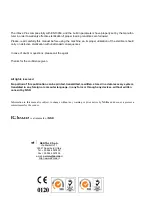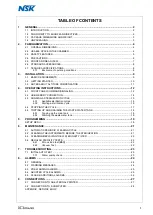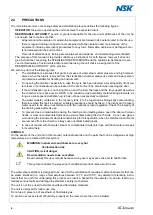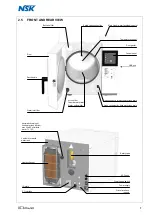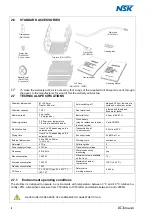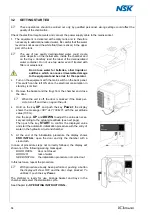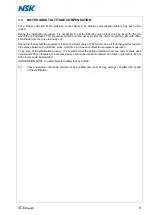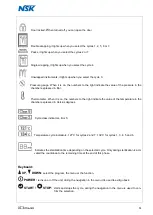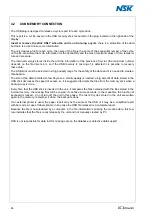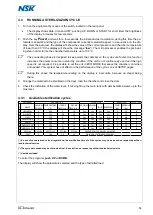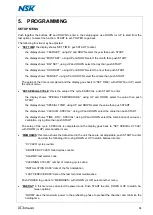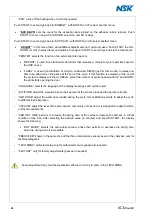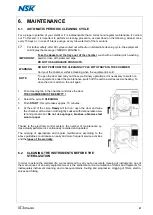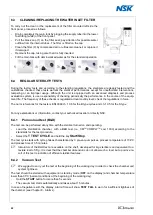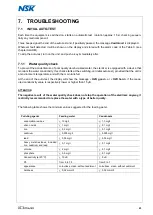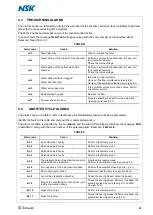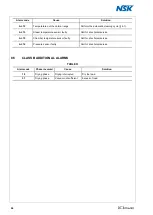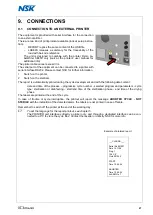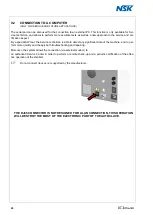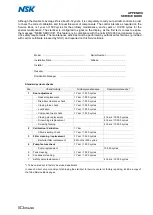
14
4.2
USB MEMORY CONNECTION
The USB plug is designed to release a cycle report for each cycle done.
This report is a .txt file saved on the USB memory stick connected on the plug located on the right side of the
display.
Insert or remove the stick ONLY when the unit is not running a cycle
, there is a protection of the data
but there is a risk to lose some information.
The unit creates a file for each cycle, the name of the file is the same of the sequential number of the cycle,
on the file are written the main information for the traceability and the most important values of time, tempera-
ture and pressure.
The internal memory stores inside the unit the information of the previous 20 cycles (the maximum number
depends on the file dimension), so if the USB memory is missing of is defected it is possible to recovery
these data.
The USB stick must be selected in a high quality range for the safety of the data and it is needed to create a
fata backup.
The size of the data is limited to few Kbyte so a small capacity is needed, a big amount of data stored in the
USB stick decreases the speed of access, so it is suggested to delete the files from the memory stick when a
backup copy is done.
Every time that the USB stick is inserted in the unit, it compares the files contained with the files stored in the
internal memory, the missing files will be copied; it can take some seconds, in the meantime the function of
keyboard is locked - do not turn off the unit in this phase. The last 20 cycles stored in the unit are written
again in the memory, remember it when the backup is done.
If an external printer is used, the paper report may be the same of the USB or it may be a simplified report
with bar code in case of labels printer; in any case the USB file released is a complete report.
Because the file is not produced by a computer, in the file information is missing the creation date, this fea-
ture indicates that the file is really release by the unit and not manually created by PC
NSK is not responsible for data lost for missing care on the database or defective data support

